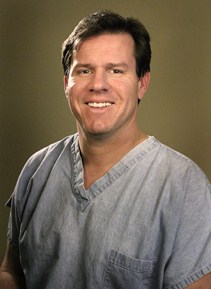Jesteś tutaj
Clinical Research on Stem Cells in Orthopedic Medicine

Knee arthritis is a very common problem, afflicting about 1-2 in 10 Americans and getting more common with a heavier population. For some patients with early arthritis (like tears in the meniscus due to age), a common treatment has been arthroscopic surgery. Regrettably, recent research shows that this type of surgery isn't effective. For more severe problems like holes in the cartilage, some patients try micro fracture or autologous chondrocyte implantation (ACI). The micro fracture procedure involves poking holes in the bone to stimulate a less than perfect cartilage repair. The ACI procedure uses cultured cartilage to be placed into the hole and surgically sewn into place. The problem with both procedures is that they don't apply to patients who are older or who have more extensive arthritis. For those patients, the only option is simply waiting until you're old enough to need a knee replacement.
There may be a better way. Stem cells live in all of our bodies. They can be easily collected, concentrated, or grown to bigger numbers and years of animal research has shown that they can help repair cartilage. We began using bone marrow derived stem cells in our practice in 2005. Since then we have performed thousands of stem cell based procedures. This procedure is a "needle out/needle in" procedure where the cells are harvested from the back of the hip area with a needle, either concentrated the same day or grown over several weeks to bigger numbers, and finally re-injected back into the injured area. We have developed several technologies that help us get cells to the right spot via a needle and/or that help cells stay at that spot to act on the injured tissue.
We first published "imaging case reports" or reports on patients who had impressive repair of their cartilage or where we noted a bigger meniscus after treatment. We then published large safety studies with hundreds of patients followed for years, showing that these stem cell treatments were safer than the surgical approaches they help many patients avoid. More recently we have published efficacy data for patients who were mostly knee replacement candidates that showed very good results when compared to a group of patients we didn't treat.
Who is a candidate for this kind of therapy? We have treated many different orthopedic conditions including partial rotator cuff or ligament tears, non-healing bones, and arthritis. The therapy is always done without surgery, as our long range goal is to switch many patients who now need more invasive surgeries to non-surgical methods of treatment. The treatment is not magic, in that we have patients who respond and patients who fail to respond. We believe this is both due the severity of the problem (some problems are just too severe for a stem cell injection to help) and the health of the patient's stem cells (patients on multiple medications for example have stem cells that are generally less healthy than someone who is not on medications).
In summary, we feel that the use of a stem cell injection is a viable alternative to surgery for many orthopedic patients. While the technology is still advancing, we feel that after gaining experience from several thousand stem cells procedures, we have a good sense of where this technology tends to work and where it tends to fail. The future for these therapies is very bright.


